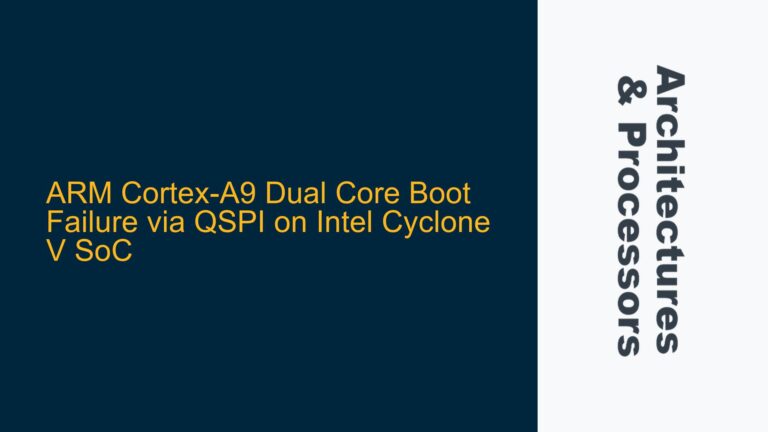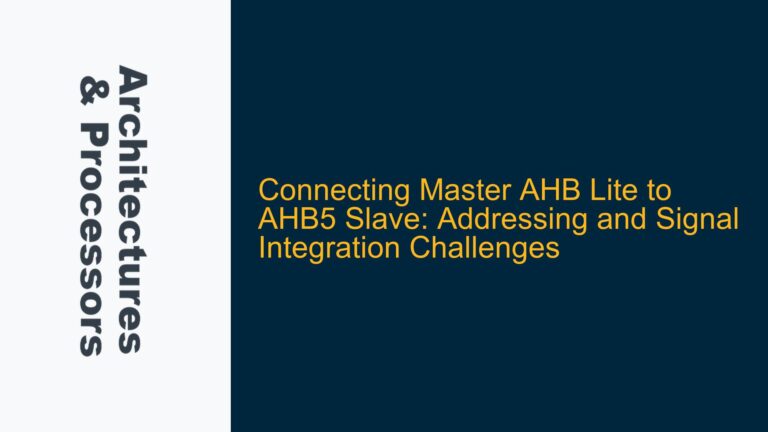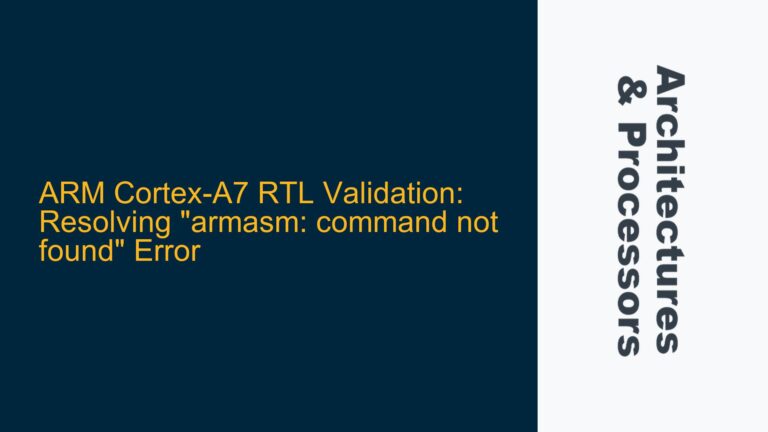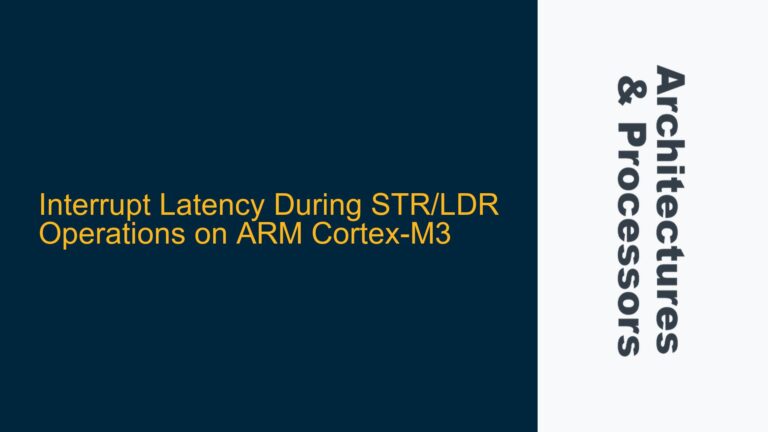GICD_NSACR Register Behavior in GICv3 and GIC600
The GICD_NSACR (Distributor Non-Secure Access Control Register) is a critical component in the ARM Generic Interrupt Controller (GIC) architecture, particularly in the context of GICv3 and GIC600 implementations. The GICD_NSACR register is responsible for controlling non-secure access to specific interrupt lines, ensuring that secure and non-secure worlds can coexist without compromising system integrity. However, the behavior and existence of GICD_NSACR registers vary between the GICv3 architecture and the GIC600 implementation, leading to potential confusion and implementation challenges.
In the GICv3 architecture, the GICD_NSACR register is divided into multiple parts: GICD_NSACR0, GICD_NSACR1, GICD_NSACR2, and GICD_NSACR3. These registers are used to control non-secure access to Shared Peripheral Interrupts (SPIs) and Software Generated Interrupts (SGIs). When Affinity Routing is enabled, GICD_NSACR0 and GICD_NSACR1 are considered reserved or Read-As-Zero/Write-Ignored (RAZ/WI), as their functionality is replaced by the GICR_NSACR register in the Redistributor. However, GICD_NSACR2 and GICD_NSACR3 remain active and are used to control access to SPIs 32-63.
In contrast, the GIC600 Technical Reference Manual (TRM) explicitly states that the first four GICD_NSACR registers (GICD_NSACR0, GICD_NSACR1, GICD_NSACR2, and GICD_NSACR3) do not exist. This discrepancy raises questions about how non-secure access to SPIs 32-63 is managed in GIC600 implementations, as these interrupts would typically fall under the control of GICD_NSACR2 and GICD_NSACR3 in GICv3.
Memory Access Control and Affinity Routing Implications
The absence of GICD_NSACR registers in GIC600 can be attributed to the architectural differences between GICv3 and GIC600, particularly in how memory access control and Affinity Routing are implemented. Affinity Routing is a feature introduced in GICv3 that allows interrupts to be routed directly to specific CPU cores without involving the Distributor. This feature significantly reduces interrupt latency and improves system performance, but it also changes how non-secure access control is managed.
In GICv3, when Affinity Routing is enabled, the GICR_NSACR register in the Redistributor takes over the role of GICD_NSACR0 and GICD_NSACR1 for controlling non-secure access to SGIs. However, GICD_NSACR2 and GICD_NSACR3 remain active to manage non-secure access to SPIs 32-63. This design ensures that all interrupt types are covered by the appropriate access control mechanisms.
In GIC600, the decision to remove the first four GICD_NSACR registers is likely driven by a combination of architectural optimizations and simplification of the access control logic. By eliminating these registers, GIC600 reduces the complexity of the Distributor and shifts the responsibility of non-secure access control entirely to the Redistributor. This approach aligns with the GIC600’s focus on high-performance and low-latency interrupt handling, but it also means that developers must adapt their software to account for the absence of GICD_NSACR2 and GICD_NSACR3.
The implications of this design choice are significant. Without GICD_NSACR2 and GICD_NSACR3, the GIC600 must rely on alternative mechanisms to control non-secure access to SPIs 32-63. One possible explanation is that GIC600 implements a unified access control mechanism within the Redistributor, extending the functionality of GICR_NSACR to cover all interrupt types, including SPIs. This would simplify the software interface and reduce the risk of misconfiguration, but it also requires careful consideration of how interrupt permissions are managed in a system with multiple Redistributors.
Implementing Unified Access Control in GIC600
To address the absence of GICD_NSACR registers in GIC600, developers must implement a unified access control mechanism that leverages the GICR_NSACR register in the Redistributor. This approach requires a thorough understanding of the GIC600 architecture and careful planning to ensure that non-secure access to all interrupt types is properly controlled.
The first step in implementing unified access control is to configure the GICR_NSACR register to manage non-secure access to SGIs and SPIs. This involves setting the appropriate bits in GICR_NSACR to enable or disable non-secure access for each interrupt type. Since GICR_NSACR is located in the Redistributor, it is essential to ensure that the configuration is consistent across all Redistributors in the system. This can be achieved by iterating through each Redistributor and applying the same configuration to GICR_NSACR.
Next, developers must account for the absence of GICD_NSACR2 and GICD_NSACR3 by implementing a software-based mechanism to control non-secure access to SPIs 32-63. One possible solution is to use a combination of memory-mapped I/O and bitmasking to emulate the functionality of GICD_NSACR2 and GICD_NSACR3. This approach involves creating a custom data structure in memory to store the access control settings for SPIs 32-63 and using software routines to apply these settings to the appropriate interrupt lines.
To ensure that the software-based access control mechanism is effective, developers must also implement proper synchronization and cache management techniques. This includes using Data Synchronization Barriers (DSBs) and Instruction Synchronization Barriers (ISBs) to ensure that changes to the access control settings are immediately visible to all CPU cores. Additionally, developers must invalidate the relevant cache lines to prevent stale data from affecting the access control logic.
Finally, it is crucial to thoroughly test the unified access control mechanism to verify that it behaves as expected under all conditions. This includes testing for edge cases, such as simultaneous access requests from multiple CPU cores, and ensuring that the mechanism does not introduce any performance bottlenecks or security vulnerabilities. By following these steps, developers can successfully implement a unified access control mechanism in GIC600 that compensates for the absence of GICD_NSACR registers and ensures reliable non-secure access to all interrupt types.
In conclusion, the absence of GICD_NSACR registers in GIC600 presents a unique challenge for developers working with this architecture. By understanding the architectural differences between GICv3 and GIC600, implementing a unified access control mechanism, and thoroughly testing the solution, developers can overcome this challenge and ensure that their systems are both secure and performant.






